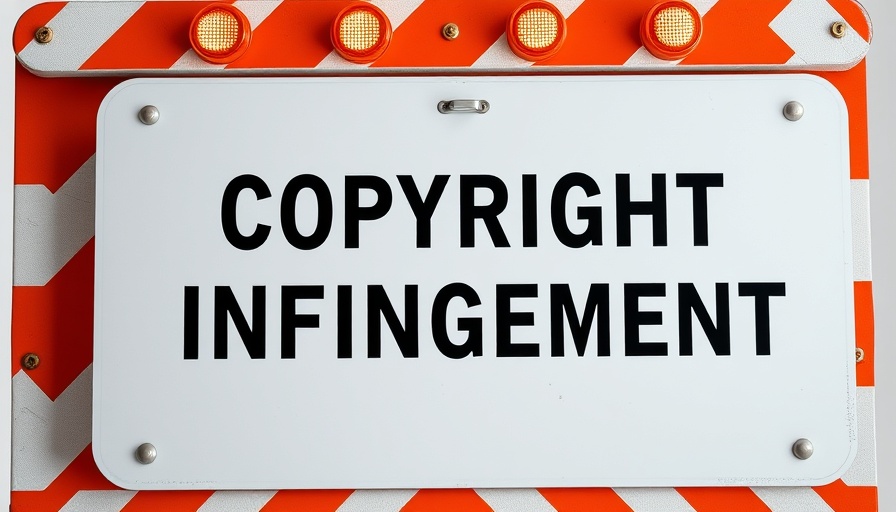
Understanding Copyright: Protecting Your Creative Rights
The internet landscape encourages sharing, but this often leads to unintentional copyright infringement. Every business owner, content creator, educator, and social media user needs to grasp what copyright protection entails to navigate this complex environment successfully. Copyright law exists to safeguard the rights of creators, and understanding how it intersects with concepts like fair use is essential for anyone engaged in creative endeavors.
What Is Fair Use, and Why Does It Matter?
Fair use is a legal principle that allows limited use of copyrighted material without permission from the owner, but its application can be murky. Typically evaluated by courts based on purpose, nature, amount, and effect on the market, fair use aims to balance creator rights with public interest. For instance, educational use or critique often qualifies for fair use, but only if the borrowed content doesn’t detract from the original’s commercial potential.
Good Intentions Can Lead to Unintended Consequences
Many business owners mistakenly believe that crediting the source or using content non-commercially shields them from legal repercussions. This misconception can lead to costly mistakes, such as using copyrighted images in blogs or incorporating unlicensed music in promotional videos. Even a brief excerpt from a copyrighted work can lead to litigation if it represents the “heart” of the work, emphasizing that the quality of the borrowed material matters just as much as its quantity.
The Risks of Ignoring Copyright Laws
The implications of copyright infringement extend beyond financial penalties; reputational harm can be catastrophic for a business. Copyright disputes can escalate swiftly, leading to detrimental headlines that impact public trust and customer loyalty. Understanding copyright law is not merely about compliance; it’s about safeguarding your business’s integrity and future.
Proactive Steps to Protect Your Business
Establishing a proactive stance regarding copyright involves seeking legal counsel early in the content creation process. Engaging a copyright lawyer can equip you with strategies to determine if your planned use is defensible under fair use, suggest alternatives for obtaining licenses, or even draft contracts for permissions. This guidance is particularly vital in industries like education and media, where content usage is frequent and varied.
Steps for Managing Copyright Compliance
- Conduct Regular Copyright Audits: Periodic review of content for proper attribution and licensing can prevent accidental violations.
- Create Standard Operating Procedures: Develop internal guidelines for assessing whether copyrighted content can be used and how to properly credit authors.
- Invest in Copyright Education: Training staff on copyright law and best practices fosters a culture of compliance and respect for intellectual property.
The Value of Copyright Knowledge
Grasping copyright nuances equips business owners to make informed decisions that not only legally protect their operations but also foster a culture of respect within the creative community. The balance between inspiration and infringement is delicate; understanding it allows individuals to contribute meaningfully while honoring the rights of original creators.
Conclusion: Take Charge of Your Creative Future
In the fast-paced world of digital content creation, knowledge is not just power—it’s protection. Business owners must arm themselves with an understanding of copyright and fair use to navigate their creative landscapes successfully. By being proactive about copyright compliance and seeking legal guidance, you can foster an innovative environment that respects and promotes creativity while avoiding pitfalls. Don’t wait until it’s too late to protect your work and your business—start learning about copyright today!
 Add Row
Add Row  Add
Add 




Write A Comment